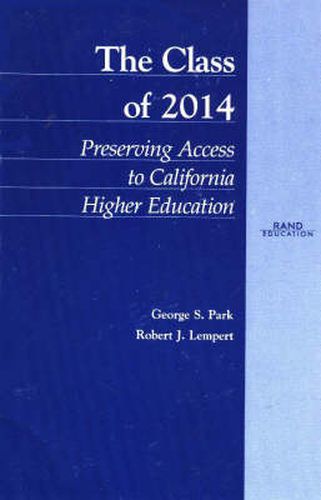Readings Newsletter
Become a Readings Member to make your shopping experience even easier.
Sign in or sign up for free!
You’re not far away from qualifying for FREE standard shipping within Australia
You’ve qualified for FREE standard shipping within Australia
The cart is loading…






Discusses a study that used a new approach to address the conditions under which California can preserve access to public higher education over the next two decades. The new approach, exploratory modeling, abandons the best-estimate method, instead combining traditional quantitative forecasting with scenario planning to produce, via computer simulation and data similar to those used in other studies, plausible scenarios of the future that clarify key uncertainties facing decisionmakers and provide a framework for stakeholder debate and policy-choice comparison. Presents the scenarios in color-illustrated form, called landscapes of plausible futures, to examine how the interrelationship of three key factors – demand for higher education, competition for state revenues, and potential productivity improvements – may affect California higher education. Shows that trends in state funding and productivity improvements dominate the question of future access. Points out that these landscapes could be used in a further study to compare the performance of potential policy choices as a way to determine the best policies to pursue.
$9.00 standard shipping within Australia
FREE standard shipping within Australia for orders over $100.00
Express & International shipping calculated at checkout
Discusses a study that used a new approach to address the conditions under which California can preserve access to public higher education over the next two decades. The new approach, exploratory modeling, abandons the best-estimate method, instead combining traditional quantitative forecasting with scenario planning to produce, via computer simulation and data similar to those used in other studies, plausible scenarios of the future that clarify key uncertainties facing decisionmakers and provide a framework for stakeholder debate and policy-choice comparison. Presents the scenarios in color-illustrated form, called landscapes of plausible futures, to examine how the interrelationship of three key factors – demand for higher education, competition for state revenues, and potential productivity improvements – may affect California higher education. Shows that trends in state funding and productivity improvements dominate the question of future access. Points out that these landscapes could be used in a further study to compare the performance of potential policy choices as a way to determine the best policies to pursue.